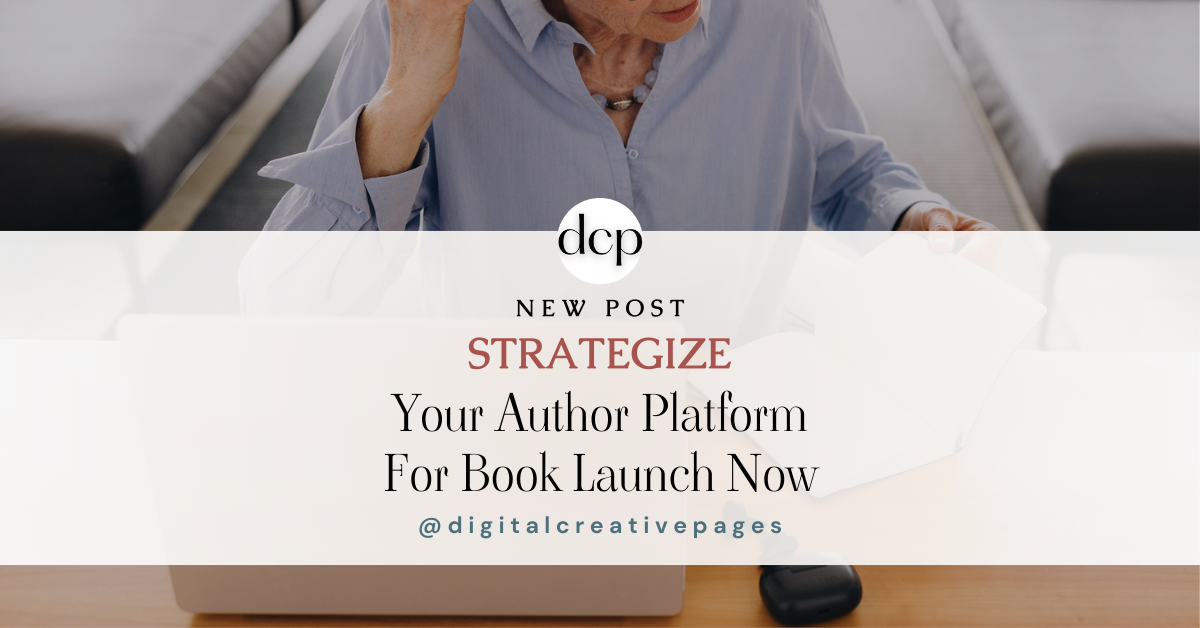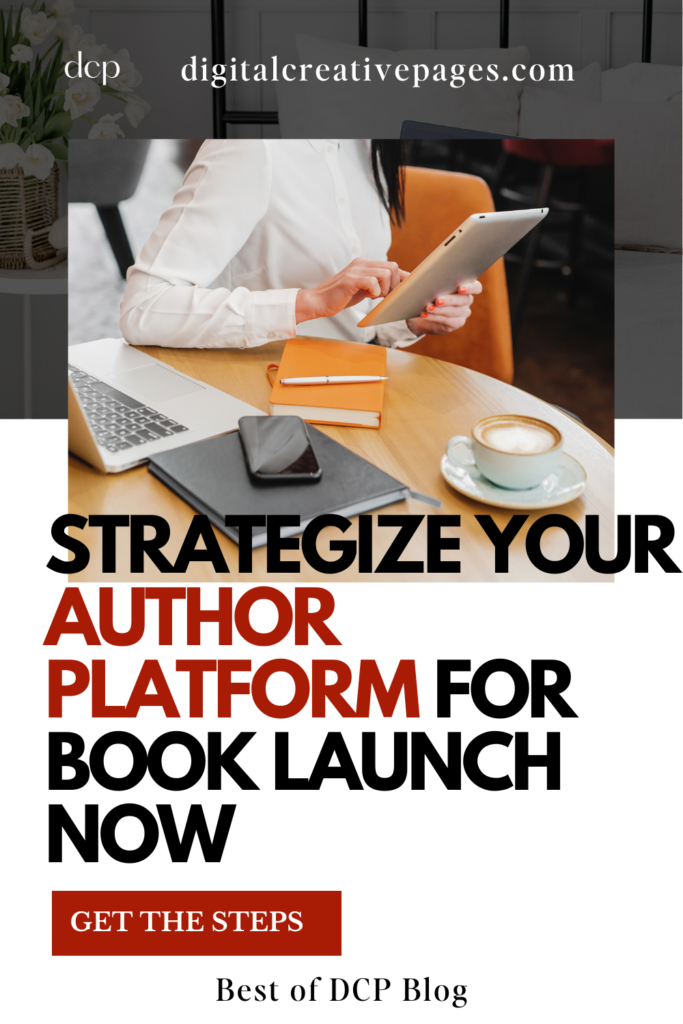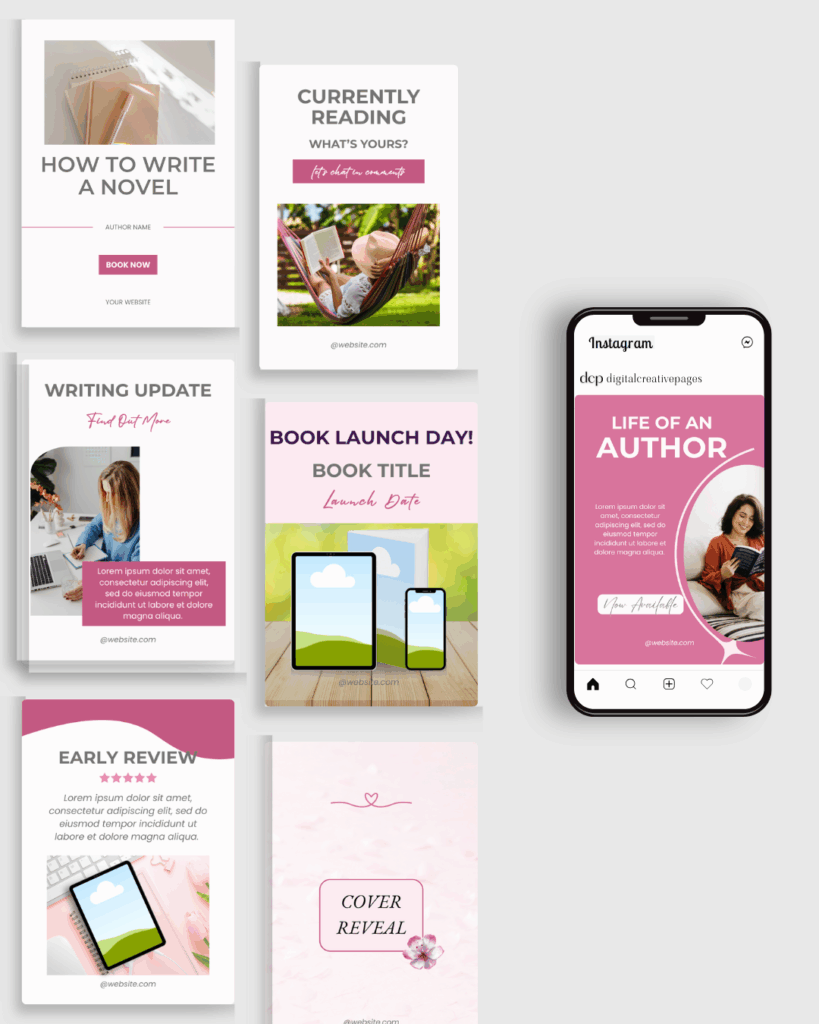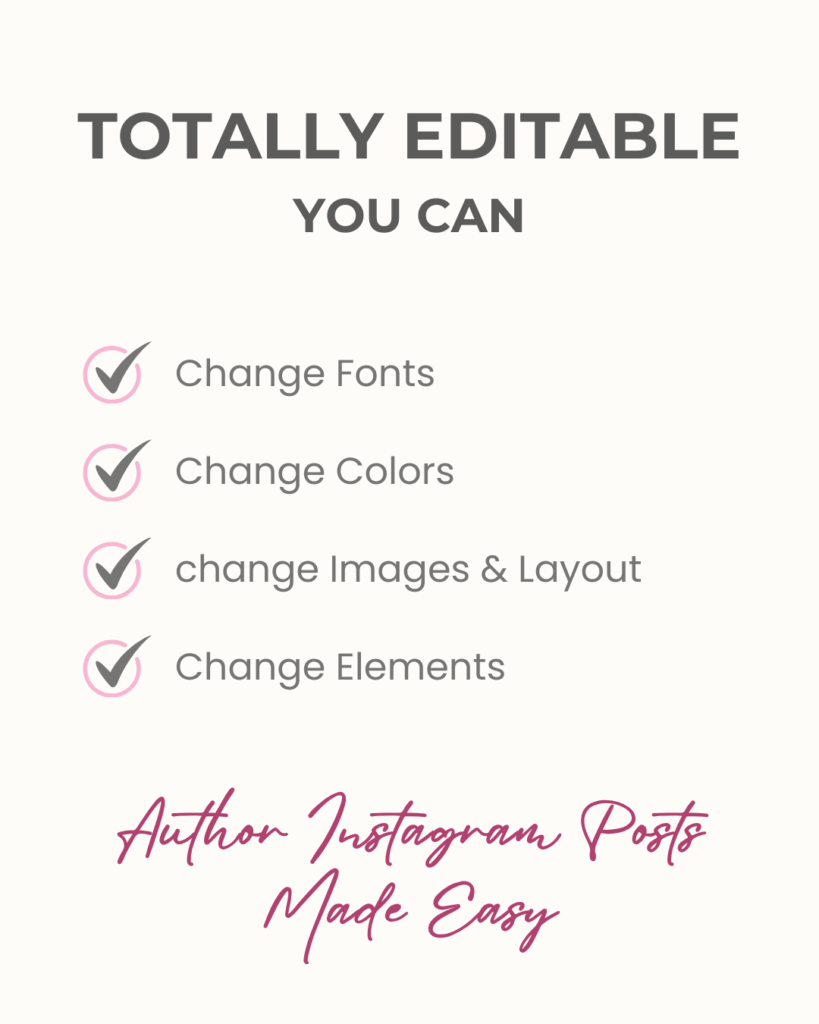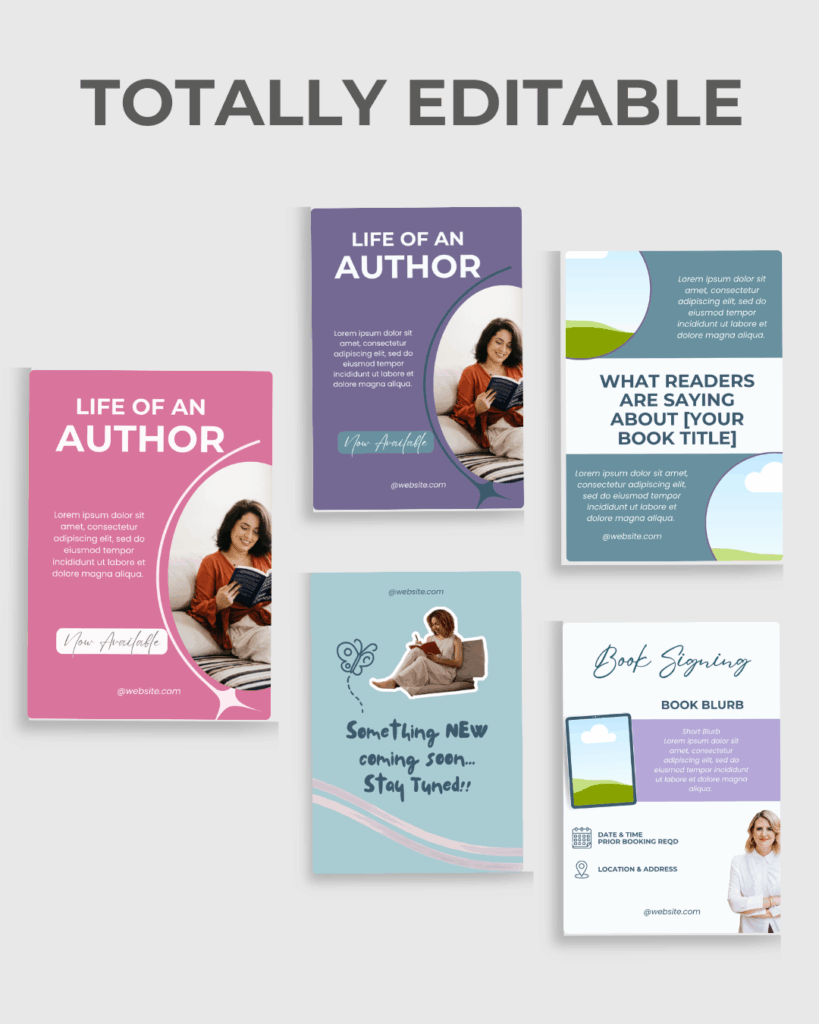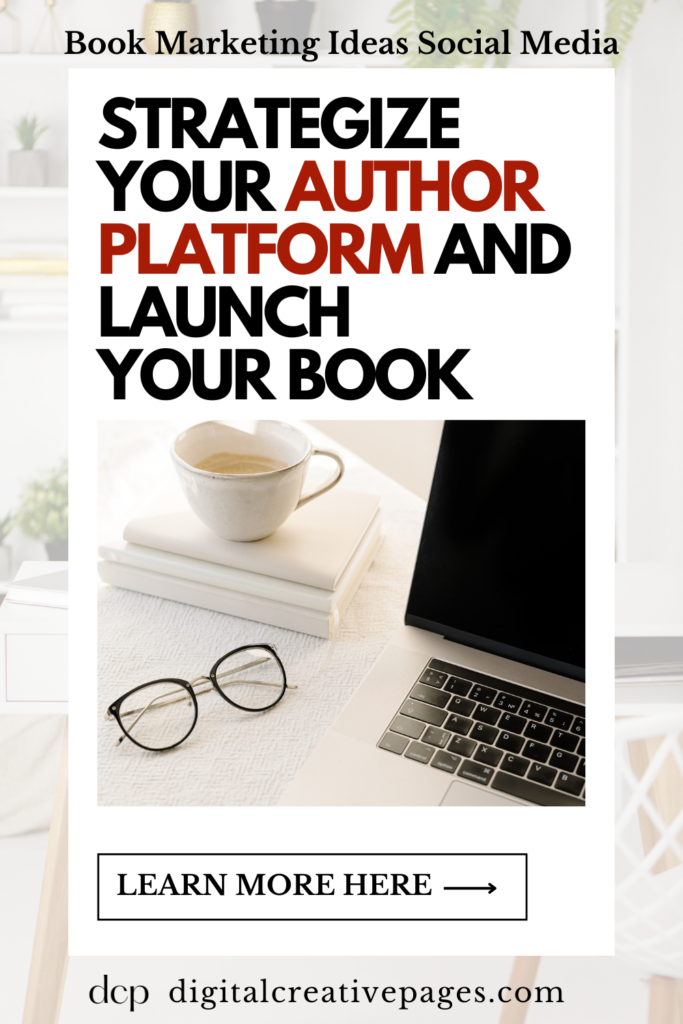Introduction
Now that you’ve established the fundamental elements of your author platform through understanding your audience, setting up your website, building an email list, managing social media, and creating content (covered in Part 1), it’s time to expand your reach and prepare for a successful book launch. This guide will walk you through how to strategize to your author platform and create buzz around your upcoming book.
Whether you’re months away from your launch or in the final stages of preparation, these strategies will help you maximize your platform’s impact and connect with a broader audience. Let’s dive into the advanced techniques that will take your author platform to the next level.
Pin this for later
1. Network with Other Authors
Collaboration can amplify your reach. Networking with other authors in your genre helps you tap into their audience while building a supportive community.
Writing can be a solitary activity, but connecting with fellow authors brings inspiration and opportunities.
A strong network can lead to co-authoring projects, cross-promotions, and even friendships that keep you motivated. Remember, the publishing world is as much about relationships as it is about writing.
Ways to collaborate:
- Participate in author interviews or guest blogs.
- Join virtual panels, webinars, or book tours.
- Share each other’s content or host joint giveaways.
- Provide blurbs or testimonials for each other’s books.
- Organize group promotions, such as themed eBook sales.
Pro Tip: Attend writing conferences and workshops—both online and in-person—to connect with industry professionals and potential collaborators. Platforms like Twitter chats (e.g., #WritingCommunity) are great for engaging with other authors in real-time.
Want easy, practical content tips to grow your business? Join my weekly email list for Canva tricks, new social media updates, and simple strategies that actually work.
2. Establish Your Presence on Goodreads
Goodreads is a goldmine for connecting with readers. Creating an author profile allows you to showcase your books, interact with readers, and build anticipation for your launch. It’s a platform where avid readers actively seek recommendations and discover new authors.
Maximize your presence by engaging in authentic interactions. Avoid hard-selling; instead, focus on sharing your passion for books and fostering genuine connections. Readers appreciate authors who participate in the community rather than just promote their work.
How to use Goodreads effectively:
- Join relevant groups and participate in discussions.
- Use the Q&A feature to engage with readers.
- Host a giveaway to attract attention to your book.
- Update your author profile with professional photos and a compelling bio.
- Write reviews for books in your genre to establish credibility.
Pro Tip: Encourage your beta readers and early reviewers to leave honest reviews on Goodreads. Positive reviews build credibility and attract new readers. Pair this with a Goodreads ad campaign to expand your book’s visibility.
3. Pitch to Podcasts and Blogs
Getting featured on podcasts and blogs expands your reach to new audiences. Many readers trust recommendations from their favorite bloggers and podcasters. These platforms also allow you to dive deep into your story, giving potential readers a chance to connect with you on a personal level.
Be selective when pitching; target shows or blogs whose audience aligns with your ideal readers. A well-researched and personalized pitch increases your chances of being accepted.
Steps to pitch effectively:
- Research podcasts or blogs related to your genre.
- Craft a personalized pitch explaining why your story resonates with their audience.
- Offer value by discussing writing tips or sharing your unique journey.
- Prepare talking points or sample questions to make it easy for hosts to feature you.
- Follow up politely if you don’t hear back.
Pro Tip: Prepare a one-sheet media kit with your bio, book summary, and social links to make it easy for hosts to promote you. Include your availability and potential topics for discussion.
4. Engage Beta Readers and Reviewers
Beta readers and early reviewers are invaluable for shaping your manuscript and generating buzz. These individuals serve as your first audience, offering constructive feedback that enhances your book’s quality. They can also become your advocates, spreading the word about your book once it’s out.
Their feedback can refine your book while their reviews build credibility. The earlier you involve them, the more time you’ll have to address potential issues and incorporate their insights effectively.
Beta readers also provide a unique perspective, often catching details you might overlook as the author. In addition to improving your manuscript, involving beta readers creates a sense of ownership and investment in your project. Early reviewers, on the other hand, can provide testimonials or blurbs that serve as powerful social proof when marketing your book.
Building Your Reader Team
Start by identifying beta readers who represent your target audience. Ensure they’re honest, constructive, and reliable. Provide them with clear instructions on what kind of feedback you need—whether it’s about character development, pacing, or overall clarity. Similarly, reach out to early reviewers, particularly bloggers or social media influencers in your niche, who can create momentum for your launch.
Where to find beta readers:
- Writing groups on Facebook: Join genre-specific groups to connect with readers who understand your niche.
- Forums like Reddit’s r/writing or Absolute Write: These platforms often have dedicated threads for beta reading.
- Through your email list or social media followers: Loyal followers are likely to be excited about being part of your creative journey.
- Beta Readers group on Goodreads
- Google BETA READERs and find our website. Check the testimonials before hiring them.
Where to find ARC- Advanced Reader copy readers
- Announce a call for ARC readers on your social media platforms or email list.
- Provide the readers with a deadline and specific feedback questions.
- Reach out to book bloggers and reviewers with a pitch and ARC (Advanced Reader Copy).
- Use platforms like NetGalley or Reedsy to find reviewers.
- Acknowledge their contributions by including them in your acknowledgments or offering a free signed copy.
Pro Tip: Create a private Facebook or Discord group for your beta readers. Share exclusive updates, sneak peeks, and engage in discussions to build excitement. This approach fosters a community atmosphere where beta readers feel valued and motivated to provide quality feedback. For early reviewers, follow up with thank-you emails and encourage them to post their reviews on platforms like Goodreads and Amazon.
5. Plan a Pre-Launch Campaign
Building hype before your book’s release is crucial for a successful launch. A pre-launch campaign keeps your audience engaged and eager to buy. It also gives you a chance to gauge interest, refine your messaging, and create a buzz that extends beyond your immediate audience.
These events can be virtual or in-person and offer an opportunity to interact directly with your readers, share insights about your book, and give them a behind-the-scenes look at your journey.
Think creatively about the type of events you can host. Virtual events, such as live Q&A sessions, book readings, or mini-workshops, are cost-effective and have a broader reach. If you prefer an in-person approach, consider hosting a meet-and-greet at a local bookstore or library. These events not only create buzz but also make your audience feel like an integral part of your journey.
Pre-launch activities:
- Countdown on social media with teasers and cover reveals: Create posts that reveal your book one element at a time, such as character introductions or a sneak peek of the first chapter.
- Share testimonials or blurbs from early reviewers: Showcase glowing feedback to build trust and anticipation among potential readers.
- Create a pre-order page with enticing bonuses like exclusive content or signed copies: Offer digital downloads, behind-the-scenes looks, or access to a live Q&A as part of the pre-order package.
- Host a virtual book reading on Instagram or Facebook Live.
- Organize a themed event tied to your book’s genre (e.g., a murder mystery party for a thriller).
- Run a giveaway during the event to increase participation.
- Collaborate with other authors for a panel discussion or webinar.
- Share sneak peeks or exclusive content, such as deleted scenes or character backstories.
Pro Tip: Use platforms like Canva to design visually appealing graphics for your campaign. Incorporate keywords like “best books for women entrepreneurs” or “new fantasy novels 2024” to attract your target audience. Utilize hashtags and trending keywords to increase visibility across social media platforms.
Record your virtual events and repurpose the content. For example, you can share highlights on social media, create snippets for reels, or upload the full recording to YouTube. This ensures your efforts have a lasting impact beyond the live event.
Related Post: How to Create Content from Your Book for Social Media
Struggling to keep your author platform active while juggling writing deadlines?
My Author Book Engagement Template Pack includes 112 ready-to-use Canva designs for Instagram and Pinterest. Perfect for cover reveals, book launches, reader engagement, and everything in between. No more staring at blank Canva pages wondering what to post! These templates work for any genre and require no Canva Pro account. Simply download, customize with your book details and brand colors, and post.
For less than the cost of 2 lattes, get your template pack here, and never run out of engaging content ideas again
6. Host Virtual Events
Virtual events are an excellent way to connect with readers and create buzz for your book. They’re also cost-effective and accessible to a global audience. Hosting these events allows you to personalize the launch experience and create memorable interactions with your audience.
Event ideas:
- Live Q&A sessions about your book or writing process: Use platforms like Instagram Live, Facebook Live, or YouTube to answer questions and interact with your audience in real time.
- Virtual book readings or chapter reveals: Share snippets of your book to entice readers, accompanied by visuals or thematic music to set the mood.
- Webinars on themes related to your book: If your book is non-fiction, host an educational webinar. For fiction, discuss the inspiration behind your characters or setting.
Pro Tip: Promote your event using platforms like Eventbrite or Facebook Events. Encourage attendees to share the event with their friends for more visibility. Record the event and make it available on-demand to reach those who couldn’t attend live.
7. Track Your Metrics
Monitoring your progress ensures your efforts are paying off. By tracking metrics, you can adjust your strategies to maximize engagement and growth. Keeping an eye on the data helps you identify what’s working and what isn’t, allowing you to optimize your time and resources effectively.
What to track:
- Website traffic: Use tools like Google Analytics to understand where your audience is coming from and which pages they engage with most.
- Email open rates and click-through rates: Analyze which emails generate the most interest and refine your subject lines or content accordingly.
- Social media engagement: Track likes, comments, shares, and follower growth to measure the impact of your posts.
Pro Tip: Set clear goals for each platform. For instance, aim to grow your Instagram followers by 20% in three months or double your email subscribers before launch. Use analytics tools like Hootsuite or Buffer to consolidate data across platforms and track progress efficiently.
Other factors
A well-thought-out book launch plan ensures that your efforts are strategic and organized. It allows you to map out timelines, goals, and promotional activities leading up to and after your book’s release. The more detailed your plan, the more seamless your launch will be.
Start by setting a launch date and working backward. Outline the steps you’ll need to take, from finalizing your manuscript and creating marketing materials to scheduling promotional posts and pitching media outlets. Your plan should also include post-launch activities to sustain momentum, such as follow-up emails and continued social media engagement.
Key components of a book launch plan:
- Timeline: Establish deadlines for each milestone.
- Marketing strategy: Detail how you’ll promote your book across platforms.
- Outreach: Plan pitches to podcasts, blogs, and media outlets.
- Events: Include pre-launch and launch-day activities.
- Post-launch: Schedule follow-ups to maintain visibility.
Pro Tip: Use project management tools like Trello or Asana to track your book launch tasks. Color-code deadlines, categorize activities, and assign specific goals for a clear overview. This organization ensures nothing falls through the cracks.
7. Prepare Your Media Kit and Press Releases
A media kit is essential for making it easy for bloggers, journalists, and influencers to feature your book. It should include all the key information about your book and you as an author, presented in a professional and accessible way. A press release, on the other hand, is a one-page announcement that highlights the key details of your book launch and is sent to media outlets.
Your media kit should include a high-quality author photo, book cover images, a compelling author bio, a press release, and excerpts or summaries of your book. Tailor your press releases to the interests of the publication or outlet you’re pitching to for the best results.
What to include in your media kit:
- A professional author photo and high-resolution book cover.
- A short and long author bio.
- A press release about your book launch.
- Book excerpts or a summary.
- Contact information and links to your social media and website.
Pro Tip: Offer your media kit in both PDF and online formats. Create a dedicated media page on your website where journalists and bloggers can access it easily. Update the kit as needed to reflect new accolades or developments related to your book.
Final Thoughts
Building an author platform takes time and consistency, but the payoff is worth it. By starting early and focusing on the strategies outlined above, you can create a loyal audience that’s excited to support your book. An engaged audience will not only help you during the launch but will also continue to champion your work long after your release.
Remember, your platform is more than a marketing tool—it’s a way to connect meaningfully with readers who will champion your work long after your launch. It’s a bridge to connect with readers on a deeper level. The relationships you build through authentic interactions can lead to lasting success in your writing career.
Start today, and by the time your book hits the shelves, you’ll have a thriving community ready to celebrate your success!
MY TOP POSTS
My introducer post – check out why I chose Showit as my website builder here
Use my code DCP to get one 1.5 months free on Showit
Get all the resources for your social media and digital marketing without breaking the bank from my DCP Shop here
Pin this for later
